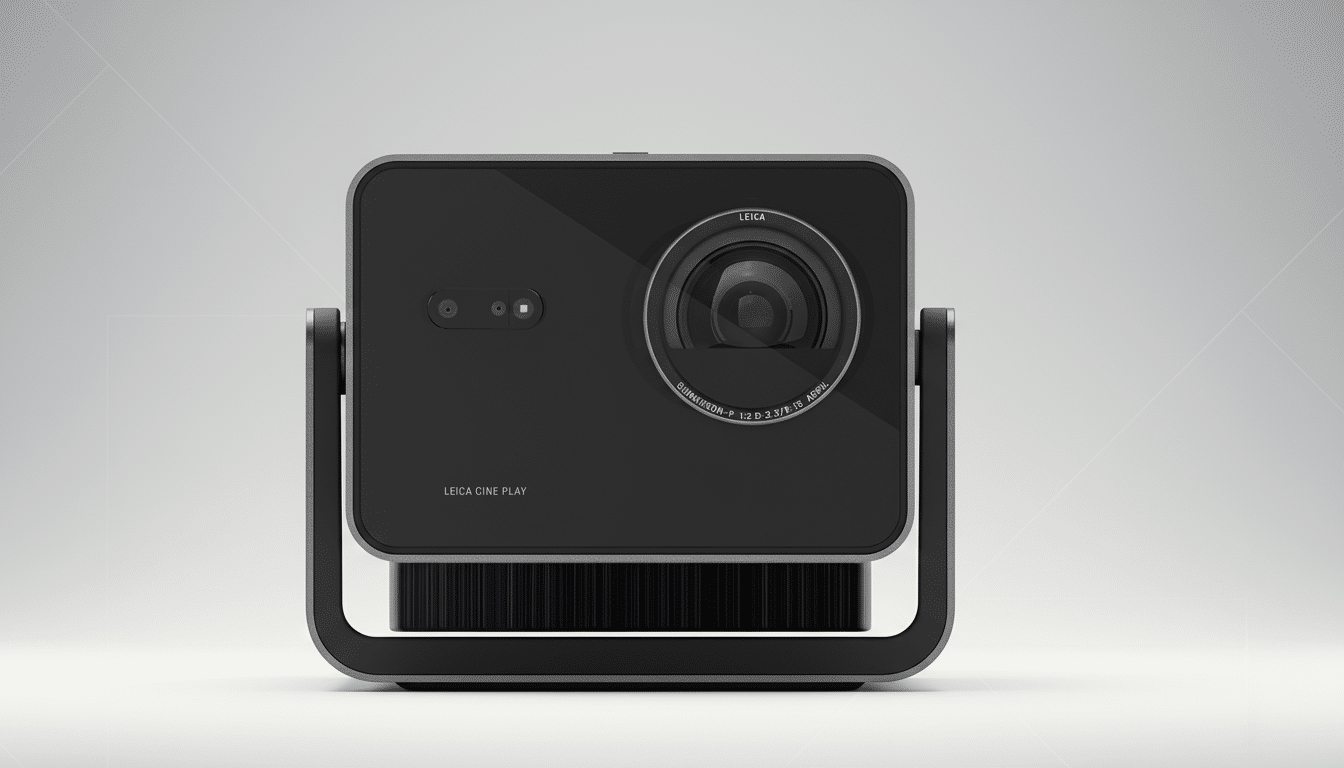Leica has announced its Cine Play 1 Plus, a larger-than-life 4K RGB triple-laser projector capable of driving both brightness and color to that magic benchmark known as cinema-like quality, with little consideration for budget constraints. Introduced in China at CNY 11,888 (about $1,670), around a little over $1,950 with the stand bundle, the model aims to reach consumers who want immersive viewing without abandoning premium build or format support.
On paper, the headline specs are undeniably eye-catching: 3,500 lumens of brightness, Dolby Vision and HDR10+ compatibility, a claimed 110 percent BT.2020 color, and pictures up to 300 inches. That’s a fairly unique combo in today’s projector world, and helps to make the Cine Play 1 Plus less about upgrading your living room and more about replacing it.

A Triple-Laser Focus on Brightness and Color
RGB triple-laser light engines are able to achieve exceptionally wide color coverage because the primary colors are created directly, rather than through a combination of a color wheel and filters as is common in many single-laser or lamp-based schemes. Leica’s claim of 110% BT.2020 coverage is usually given as area instead of volume, but even so this implies über-saturated images that go beyond the DCI-P3 gamut used by most mainstream HDR footage. The light source itself should last for a good 25,000 hours, or years of maintenance-free use for most people.
This unit comes in at 3,500 lumens and ought to maintain punch in a room with some light coming into it, though the true HDR pop will want light controlled. For perspective, lots of other great 4K competitors hover in the 2,000- to 3,000-lumen range; so moving up to 3,500 fairly well serves the Cine Play 1 Plus when you want a larger screen and brighter HDR tone-mapping. Industry testing from outlets like RTINGS has proved this again and again: It’s brightness and tone-mapping algorithms that are most crucial to the perception of HDR quality on projectors, which can’t produce the sheer peak nits of a modern OLED or mini-LED TV.
Integrated HDR Formats and Built-in Streaming Support
Supporting both Dolby Vision and HDR10+ is a definite flex. Auto-adaptive metadata is still uncommon in projectors, which tend to subscribe to the HDR10 ideology. Some of that landscape has shifted, with Hisense and Formovie helping push the needle forward on Dolby Vision in a laser projector sense, and the Leica addition puts the Cine Play 1 Plus among a small group gunning for better scene-by-scene tone mapping.
At its core, the smart home product runs VIDAA OS, which is the smart TV system it powers for familiar TV partners. There are preloaded streaming staples including Netflix, Prime Video and so on, which is a useful perk since many projectors either arrive with wobbly app support or force you to get an external streamer. Wireless casting includes AirPlay 2 and Miracast for iOS and Android ecosystems.
Standard-Throw Design, Minus the Cheap Hardware
It is not an ultra-short-throw “laser TV” unit like its sibling; the Cine Play 1 Plus has a normal throw ratio of 0.9–1.5:1. That means you’ll place it further from the screen, which many purists like for cleaner geometry, simpler screen choices and more uniform light flow. Weighing in around 5.6 kg, the projector sports a built-in tilting stand for easy placement but an optional gimbal-style stand is available which allows more movement. Keeping things simple without complex, flashy designs typical of many modern digital cameras, the minimalist body follows Leica’s traditional styling cues and uses good quality materials.

Gaming Considerations and Connectivity Options
A new gaming mode looks to reduce input lag for consoles and PCs. Leica has not published any latency figures, however projector gaming modes generally aim to deliver sub-30 ms at 4K60—this is good enough for all game genres except high-level competitive play. HDMI 2.1 ports mean high-bandwidth connections for today’s consoles, and the I/O line-up is extensive: Two USBs, Ethernet, optical audio and a 3.5 mm output will cover most setups.
Audio is taken care of by the unit’s built-in 10W stereo speakers with DTS Virtual:X and Dolby Audio processing. That’s great for casual viewing, though anyone building a serious cinema will still want a dedicated AVR (audio-video receiver) or soundbar. We like that DTS and Dolby processing are onboard for a wide range of content.
Price Positioning and Outlook for Availability
At around $1,670 in China the Cine Play 1 Plus is cheaper than a lot of boutique laser projectors and still is very much at the high end. Leica’s optical heritage and industrial design represent real brand equity, and the spec sheet helps justify its ask if you value color, brightness, and HDR format support ahead of bare-minimum pricing.
There’s no official word on international deployment at this stage, but a wider roll-out is not beyond the realms of possibility, given the way in which Leica has worked with Hisense and VIDAA. If so, and if it goes global, regional pricing and taxes would push up the cost. Industry trackers like Futuresource Consulting observe that laser projection is advancing at home, and it’s products that couple muscular smart platforms with wide-gamut, high-brightness engines that are steaming the transition engine along.
The bottom line: The Cine Play 1 Plus is not vying for the lowest-price position. It’s hunting for a particular experience — lustrous, color-rich and format-friendly big-screen cinema — with the fuselage-warmer eleganza and ecosystem support to actually pull it off. For buyers who appreciate a projector that feels contemporary, bulging and solidly constructed, Leica’s latest is well worth adding to the shortlist.

